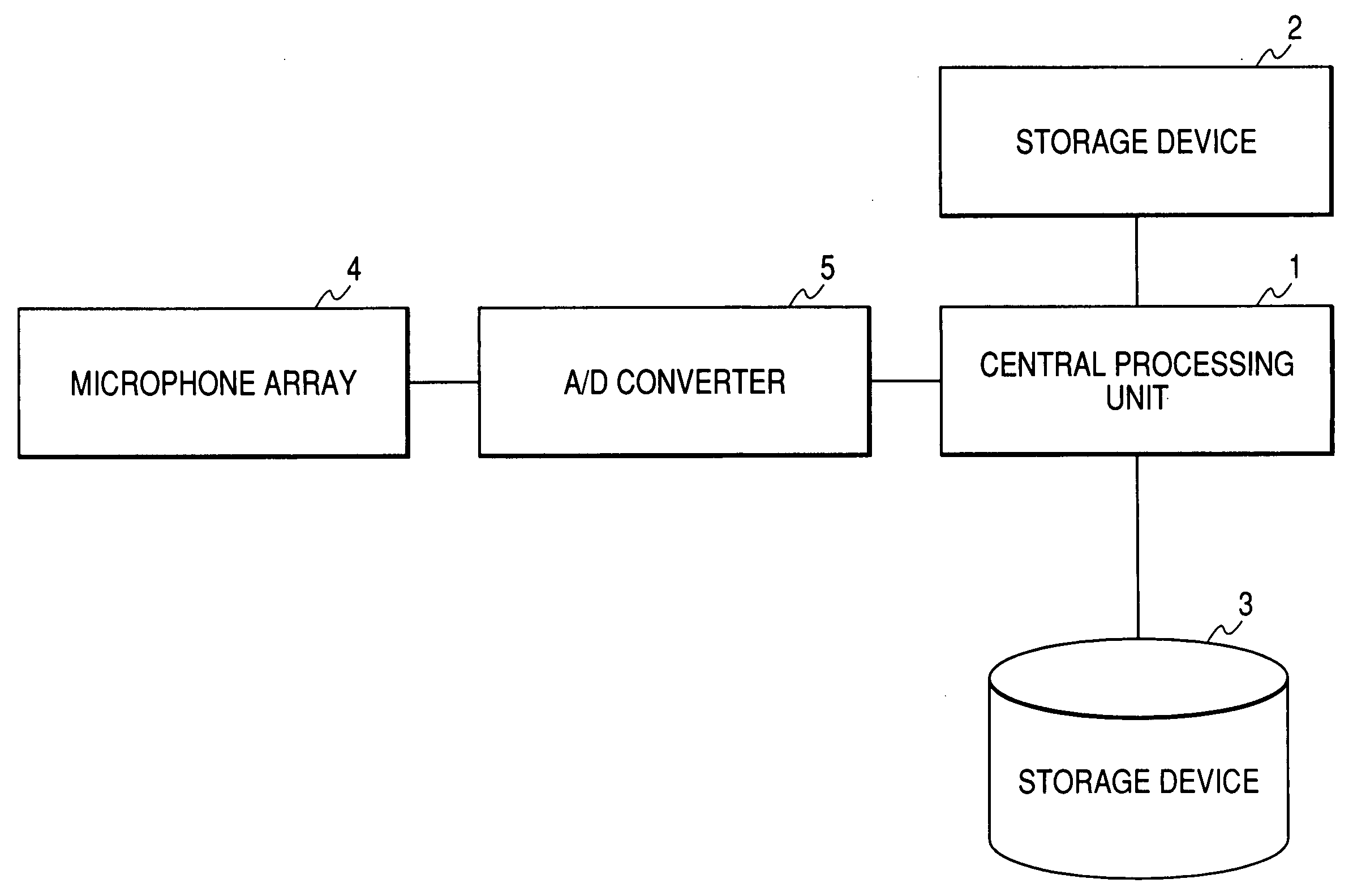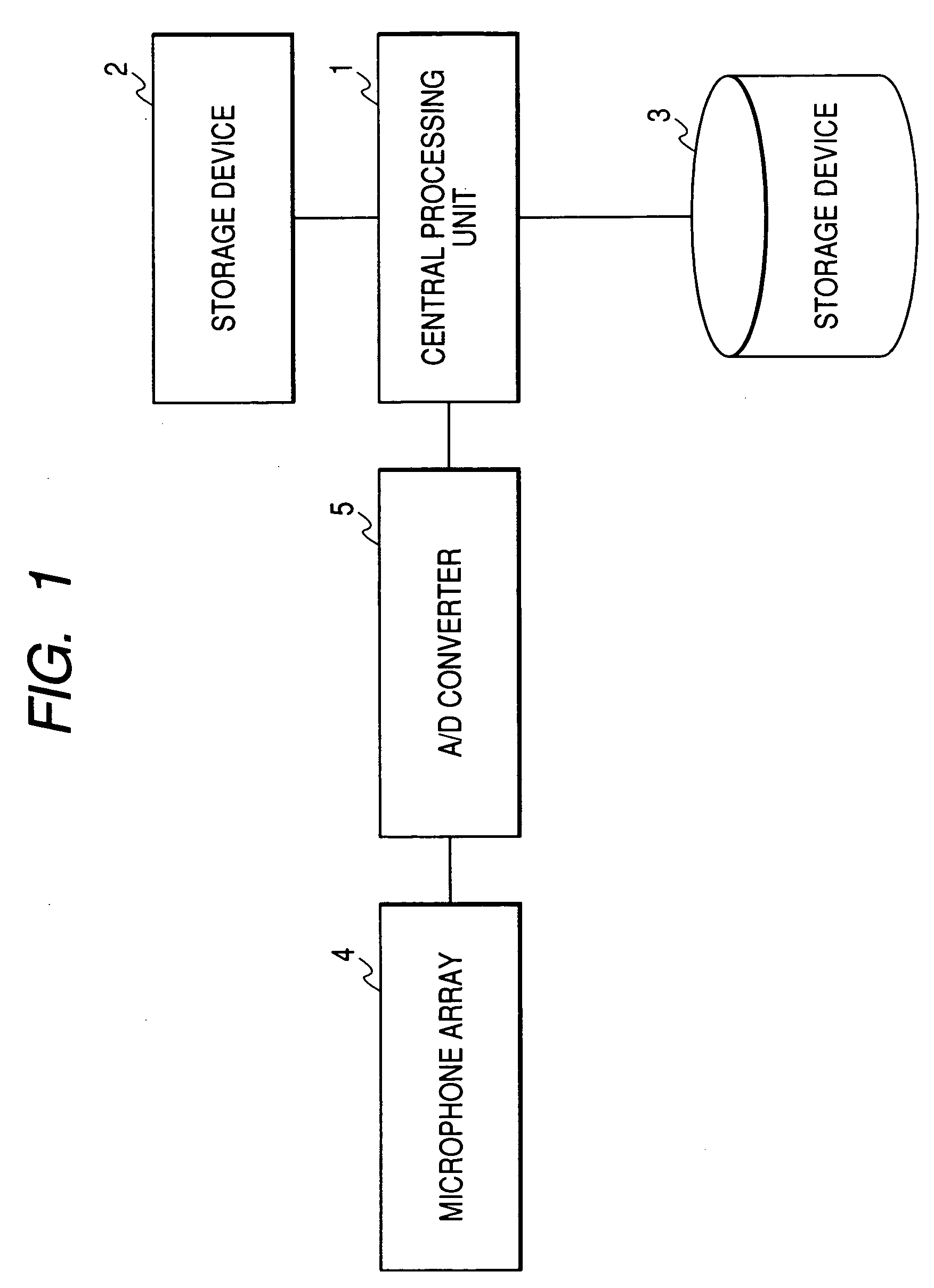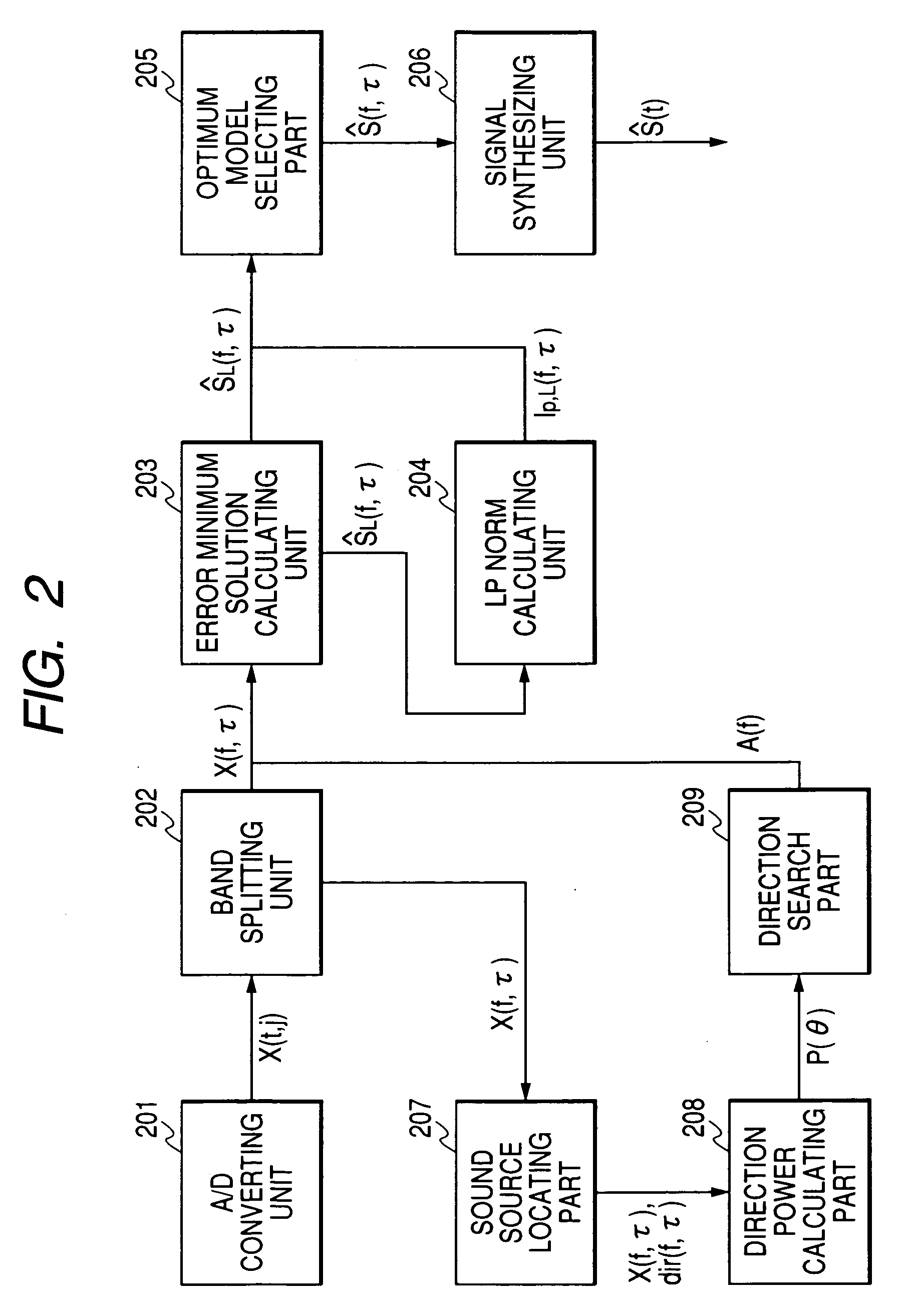Sound source separating device, method, and program
a separation device and sound source technology, applied in the direction of transducer details, instruments, speech analysis, etc., can solve the problems of inability to generate filters to satisfy constraints, performance deterioration, and inability to obtain signals sufficiently separated using output filters
- Summary
- Abstract
- Description
- Claims
- Application Information
AI Technical Summary
Benefits of technology
Problems solved by technology
Method used
Image
Examples
first embodiment
[0011]FIG. 1 shows a hardware configuration of this embodiment. All calculations included in this embodiment are performed within the central processing unit 1. A storage device 2 is a work memory constructed by a RAM, for example, and all variables used during calculations may be placed on one or more of the storage device 2. Data and programs used during calculations are stored in a storage device 3 constructed by a ROM, for example. A microphone array 4 comprises at least two or more microphone elements. The individual microphone elements measure an analog sound pressure value. It is assumed that the number of microphone elements is M.
[0012]An A / D converter converts an analog signal into a digital signal (sampling), and can synchronously sample signals of M or more channels. An analog sound pressure value of each of microphone elements captured in the microphone array 4 is sent to the A / D converter 5. The number of sounds to be separated is set in advance, and stored in the stora...
PUM
 Login to View More
Login to View More Abstract
Description
Claims
Application Information
 Login to View More
Login to View More - R&D
- Intellectual Property
- Life Sciences
- Materials
- Tech Scout
- Unparalleled Data Quality
- Higher Quality Content
- 60% Fewer Hallucinations
Browse by: Latest US Patents, China's latest patents, Technical Efficacy Thesaurus, Application Domain, Technology Topic, Popular Technical Reports.
© 2025 PatSnap. All rights reserved.Legal|Privacy policy|Modern Slavery Act Transparency Statement|Sitemap|About US| Contact US: help@patsnap.com



